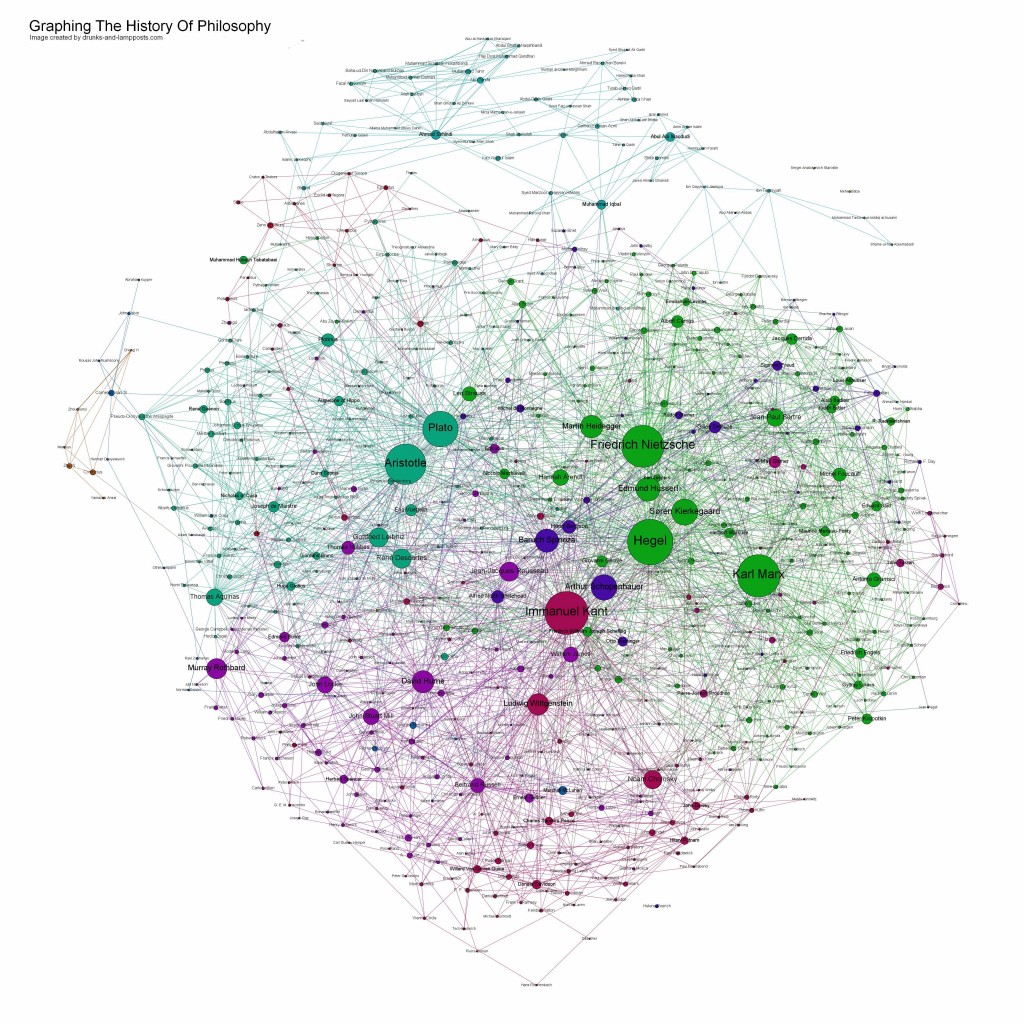Maps of science have been proliferating for a number of years now, and interest has been heavily correlated to the advancement of mapping technologies. Philosophy has finally produced a blip on the mapping radar, and the results are pretty interesting. You can zoom in and out on the full map here. Considering that the data is from Wikipedia, I am a little surprised that there is not more ethic or linguistic diversity in the philosophers presented. But the resulting map is still fascinating – and, I think, beautiful.
Maps like these give more credence to thinking about what constitutes the tradition of philosophy – a debate that is perennially important to education in philosophy, especially when it comes to deciding what ought to be taught in introductory-level courses – and, further, what constitutes philosophy itself. There are some individuals, like Leo Tolstoy and Ivan Illich (to name a couple), that some would certainly not consider philosophers (they certainly didn’t call themselves philosophers in the professional sense), and others that, for some, are given more or less philosophical credence than they ought. In other words, this raises the question of what the appropriate territory is with which such a map ought to correspond. I think this question is of the utmost importance for philosophers and philosophy students, as it is a crucial aspect of thinking through the role of philosophy in the future of the university.


